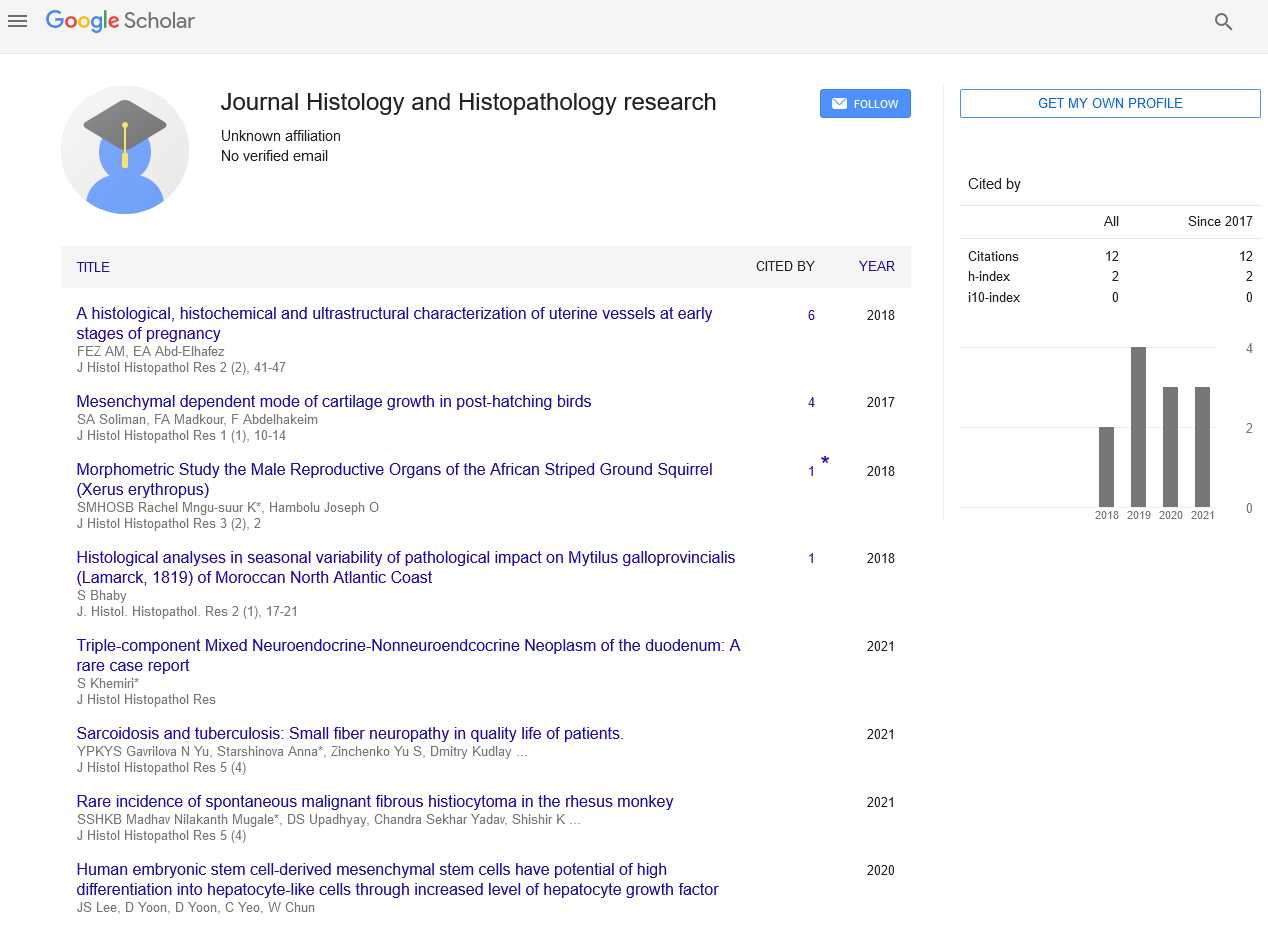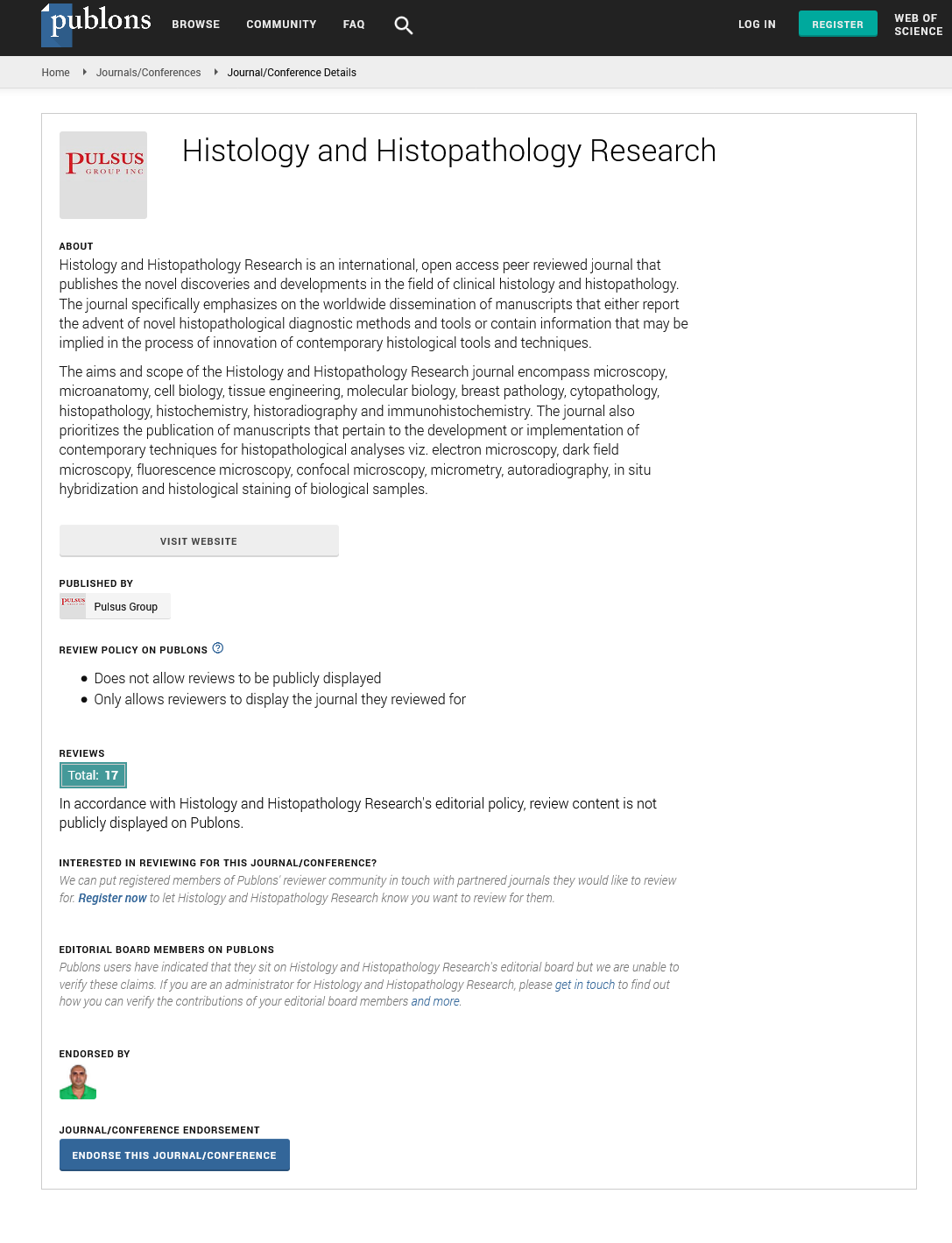Microscopic anatomy of microanatomy
Received: 07-Jul-2021 Accepted Date: Jul 21, 2021; Published: 28-Jul-2021
Citation: James J. Microscopic anatomy of microanatomy. J Histol Histopathol Res 2021;5(2)
This open-access article is distributed under the terms of the Creative Commons Attribution Non-Commercial License (CC BY-NC) (http://creativecommons.org/licenses/by-nc/4.0/), which permits reuse, distribution and reproduction of the article, provided that the original work is properly cited and the reuse is restricted to noncommercial purposes. For commercial reuse, contact reprints@pulsus.com
Description
Histology otherwise called minuscule life systems or microanatomy is the part of science which considers the tiny life structures of natural tissues. Histology is the infinitesimal partner to net life systems, which takes a gander at bigger constructions apparent without a magnifying lens. Albeit one may partition minuscule life systems into organology, the investigation of organs, histology, the investigation of tissues, and cytology, the investigation of cells, present day use puts these subjects under the field of histology. In medication, histopathology is the part of histology that incorporates the minuscule distinguishing proof and investigation of sick tissue. In the field of fossil science, the term pale histology alludes to the histology of fossil living beings.
Histopathology is the part of histology that incorporates the minute recognizable proof and investigation of sick tissue. It is a significant piece of anatomical pathology and careful pathology, as precise analysis of malignancy and different illnesses regularly requires histopathological assessment of tissue tests. Prepared doctors, habitually authorized pathologists, perform histopathological assessment and give indicative data dependent on their perceptions.
The field of histology that incorporates the planning of tissues for minuscule assessment is known as histotechnology. Occupation titles for the prepared staff that plan histological examples for assessment are various and incorporate histotechnicians, histotechnologists, histologys pecialists and technologists,clinical research center professionals, and biomedical researchers.
Substance fixatives are utilized to save and keep up with the construction of tissues and cells; obsession additionally solidifies tissues which helps in cutting the slight areas of tissue required for perception under the magnifying lens. Fixatives for the most part safeguard tissues (and cells) by irreversibly cross-connecting proteins. The most generally utilized fixative for light microscopy is 10% impartial cradled formalin, or NBF (4% formaldehyde in phosphate cushioned saline). For electron microscopy, the most normally utilized fixative is glutaraldehyde, generally as a 2.5% arrangement in phosphate cushioned saline. Different fixatives utilized forelectron microscopy are osmium tetroxide or uranyl acetic acid derivation.
The principle activity of these aldehyde fixatives is to get interface amino gatherings in proteins through the arrangement of methylene spans (-CH2-), on account of formaldehyde, or by C5H10 cross-joins on account of glutaraldehyde. This interaction, while safeguarding the underlying respectability of the cells and tissue can harm the organic usefulness of proteins, especially compounds. Formalin obsession prompts debasement of mRNA, miRNA, and DNA just as denaturation and change of proteins in tissues. Be that as it may, extraction and investigation of nucleic acids and proteins from formalin-fixed, paraffin-implanted tissues is conceivable utilizing proper conventions.
For light microscopy, paraffin wax is the most often utilized implanting material. Paraffin is immiscible with water, the primary constituent of natural tissue, so it should initially be taken out in a progression of drying out advances. Tests are moved through a progression of dynamically more thought ethanol showers, up to 100% ethanol to eliminate remaining hints of water. Parchedness is trailed by a clearing specialist (normally xylene albeit other ecological safe substitutes are being used which eliminates the liquor and is miscible with the wax, at long last softened paraffin wax is added to supplant the xylene and penetrate the tissue. In most histology, or histopathology research centers the lack of hydration, clearing, and wax invasion are completed in tissue processors which computerize this interaction. When invaded in paraffin, tissues are arranged in molds which are loaded up with wax; when situated, the wax is cooled, hardening the square and tissue.
Paraffin wax doesn't generally give an adequately hard framework to cutting extremely slight areas (which are particularly significant for electron microscopy). Paraffin wax may likewise be too delicate according to the tissue, the warmth of the dissolved wax may modify the tissue undesirable, or the getting dried out or clearing synthetic compounds may hurt the tissue. Options in contrast to paraffin wax incorporate, epoxy, acrylic, agar, gelatin, celloidin, and different kinds of waxes.






